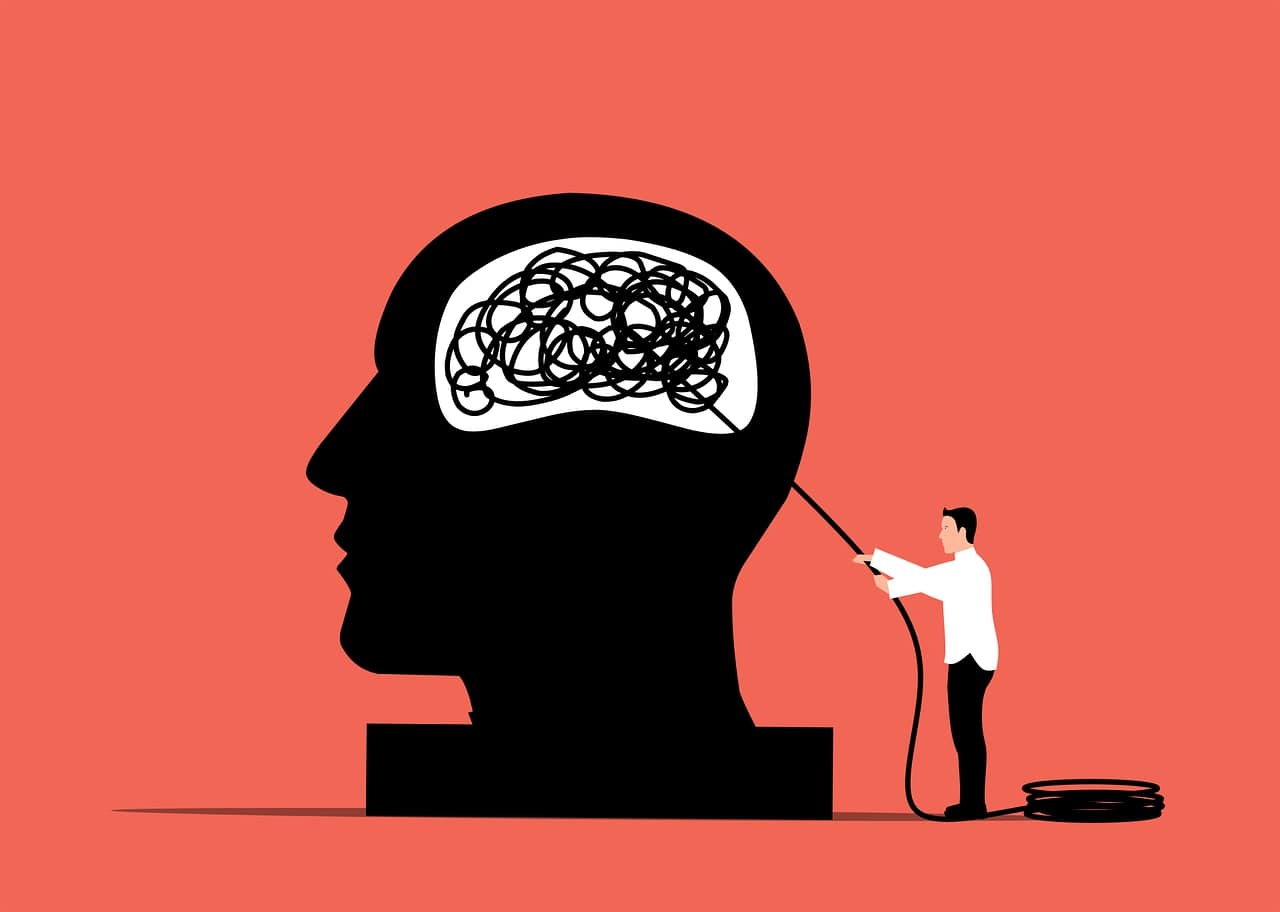Mindfulness-based cognitive therapy exercises help with various mental health issues like depression, anxiety, bipolar disorder, stress, etc. Depressive disorder or depression is a mental health disorder that affects the majority of individuals. Statistics have time and again proven that 21 million people in the United States have suffered from depression at some point in their lives. This data would be even more alarming if we consider the number of people with depressive disorder worldwide.
The scary thing about depression is that it can be recurring and each episode of depression can be more dangerous than the last. People lose their zeal to live and even start harming themselves when suffering from depression. Some people even try to commit suicide because they think it is easier to take their lives than deal with their mental health condition. Depression is often accompanied by other mental health conditions like anxiety disorders and panic attacks.
The good news is that depression can be managed with a combination of medications and psychotherapy. One such psychotherapy that helps patients manage their symptoms of depression is mindfulness-based cognitive therapy. Various mindfulness-based cognitive therapy exercises help people battle mental health disorders.
In this blog, we will discuss mindfulness-based cognitive therapy in detail. Read on to find out more about this psychotherapy.
Struggling to find relief from depression?
What is mindfulness-based cognitive therapy?
Mindfulness-based cognitive therapy exercises are a kind of psychotherapy that results from combining cognitive behavioral therapy and meditation. Mindfulness is a state where an individual is focused on the present moment without overthinking about the past or worrying about the future. While practicing mindfulness, an individual is encouraged to accept their present situations unconditionally and without any judgments.
Mindfulness-based cognitive therapy exercises were developed by Zindel Segal, Mark Williams, and John Teasdale. They integrated the principles of cognitive therapy with another program pioneered by Job Kabat-Zinn in the year 1979. This programme was called mindfulness-based stress reduction. After combining these two, they observed that the results were more helpful for patients who face anxiety and stress, depressive disorder, and even bipolar disorder.
In mindfulness-based cognitive therapy exercises, the therapist incorporates mindfulness to help with the mental health of the patient. In simple words, the therapist encourages the patient to practice acknowledging their thoughts, emotions, and feelings regularly.
Do mindfulness-based cognitive therapy exercises treat depression?
MBCT exercises are quite helpful in treating depression. Moreover, MBCT exercises are phenomenal in alleviating the symptoms of other mental health disorders that are often associated with depression like anxiety disorder, bipolar disorder, social anxiety, stress, etc.
Mindfunless-based cognitive therapy helps you understand what depression is. It helps you explore the root cause of your unpleasant feelings and analyze your thoughts.
It also helps you become aware of your thoughts and makes you notice the pattern of your unpleasant mood. As a result, patients with depressive disorder start becoming more mindful of their thought patterns. They also start developing the reasoning as to why they are often stuck in a depressive mood.
Sometimes, individuals set unrealistic standards for their lives. They start thinking that they or their lives are not ‘good enough’ because their unrealistic standards are often not met. This negative thinking affects the quality of life. Mindfulness helps you get rid of such emotions. It also makes you appreciate your life and set realistic expectations for yourself.
How do mindfulness-based cognitive therapy exercises work?
Mindfulness-based cognitive therapy exercises are spread over 8 weeks and are practiced in a group. This type of psychotherapy is particularly helpful for those who have experienced at least one episode of depressive disorder in their lives.
Each session of mindfulness-based cognitive therapy lasts for 2 hours. After 5 continuous weeks, there is one session that lasts for an entire day.
One unique thing about mindfulness-based cognitive therapy exercises is that the techniques and exercises taught in MBCT are practiced after each session is over. When the patient practices these exercises outside the class, they start seeing progress in their mental health conditions.
The therapist assigns certain assignments to the patients. These assignments consist of homework such as practicing guided meditations and being mindful of their daily thoughts, activities, and emotions. For example, the patients are encouraged to be mindful of their everyday mundane tasks such as brushing their teeth, combing their hair, exercising, making their bed, eating, etc. The average duration for each assignment task is about 45 minutes.
As a result, practicing mindfulness daily can help elevate their mood. Regular mindfulness can help in the betterment of your mental health.
Benefits of mindfulness-based cognitive therapy exercises
There are several powerful benefits associated with mindfulness-based cognitive therapy exercises. The primary benefit of these exercises is that they play a key role in improving your mental health. Let us list down the benefits of mindfulness-based cognitive therapy exercises:
- Mindfulness helps in discovering oneself. When one practices mindfulness daily, they often end up becoming aware of their moods and their thought patterns. This helps individuals nip unpleasant and self-destructive thoughts in the bud.
- Mindfulness makes an individual a happier person overall. Since mindfulness encourages you to focus on the present moment, it makes you appreciate the small things that improve your quality of life.
- Mindfulness teaches you to observe your negative emotions without judgment. At the same time, the therapist encourages you to distance yourself from your negative emotions and replace them with a positive thought. This process prevents the patients from overthinking their past which might contribute to triggering their anxiety.
- Practicing mindfulness-based cognitive therapy exercises can help you appreciate your present. Dwelling too much in the past or worrying about the future can be a contributing factor to stress, anxiety, and depression. Mindfulness teaches you to shift to a calm and non-judgmental mindset.
- Mindfulness empowers patients to deal with their negative thoughts, emotions, feelings, and past experiences in a healthy manner.
- Mindfulness-based cognitive therapy not only helps with mental health issues but also helps individuals handle their unpleasant emotions like grief, sadness, anger, and unpleasant situations in the future as well.
- Mindfulness can help in handling difficult situations maturely. It teaches an individual to be accepting of their unpleasant emotions without feeling the need to judge those thoughts.
Popular Mindfulness-based Cognitive Therapy Exercises And Techniques
Mindfulness-based cognitive therapy exercises are designed to help individuals cope with stress and mental health disorders. This type of psychotherapy combines the principles of cognitive behavioral therapy, mindful meditation, and cognitive restructuring so that the patients can catch their early thoughts before they spiral into panic attacks or depression.
With these exercises and techniques, the patients can identify negative thought patterns, increase their compassion, and accept their feelings and emotions without judgment. The primary idea behind these exercises is that the patient is taught to distance themselves from negative thoughts, emotions, and feelings before they trigger anxiety, panic attacks, or a depressive episode.
Let us discuss the techniques used in MBCT exercises.
Three-minute breathing space
The therapist may suggest this quick exercise that can be practiced in 3 minutes. This exercise requires 3 steps:
During the first minute of this exercise, the patient is encouraged to think about how they are feeling at the present moment. They focus on their thoughts, feelings, and sensations in their body. This act helps the patient with grounding and analyzing their feelings. They are taught to notice how their feelings are affecting them. The therapist might even encourage the patient to distance themselves from negative emotions and concentrate on observing such emotions without judgment.
The second minute is spent on being aware of their breath. This act helps shift the focus of the patient from anxiety over the past or worries about the future. The simple action of concentrating on their breathing helps the patient to calm down and regain focus.
During the last minute of this exercise, the patient is taught to shift their attention from their breath to the sensations that they feel in their body. This act helps the patient to be mindful of their emotions. Once the patient is in control of their thoughts and emotions, it is easier to concentrate on eradicating their negative thoughts and replacing them with positive ones.
The beauty of the 3-minute breathing space exercise is that it can be practiced anywhere. It can be practiced in your home, office, on a crowded bus, or even with family. All you need is 3 minutes to feel better. This exercise is particularly helpful for people with social anxiety.
Body scan
The body scan exercise is done by sitting on a chair or lying on your back with your palms facing upwards. The patients are then guided to shift their focus to their breath. The patients then shift their focus to how they are feeling. They are encouraged to be mindful of the sensations in their body and the feel of the clothes against their skin. They are made aware of the surrounding noise, and smell.
Lastly, the patients are encouraged to shift focus on each body part. They are guided to concentrate on the body parts that are feeling light, sore, or heavy.
The patients are then guided toward focusing on each body part. The focus is shifted chronologically starting from toes to head.
At the end of the body scan exercise, the patients shift their focus back to their surroundings.
Mindfulness stretching
The therapist encourages you to practice mindfulness not only during meditation but in daily activities as well. Practicing mindfulness is particularly helpful during exercise.
Mindful stretching can help prepare individuals to face the unavoidable challenges of the day. Stretching comes naturally to humans. It also increases the blood circulation in the body. As a result, it releases hormones that make you feel good like serotonin in the body.
Mindful stretching can be practiced in the following ways:
- Pandiculation: Pandiculation is a simple stretch that can be practiced every morning. It is practiced by placing your palms on your shoulders, raising the elbows, and yawning. This simple stretch makes you fresh and energized for the day.
- Proprioceptive Neuromuscular Facilitation (PNF): Proprioceptive neuromuscular facilitation is a set of guidelines that are based on the 4 principles of stretching.
- Avoiding pain during stretching
- Avoiding injury by stretching slowly
- Ensure that the correct muscles are being stretched and be cautious while stretching
- To ensure that the muscles or joints are not getting injured during stretches
- Yoga Poses: Yoga is focused on mindful stretching. There are beginner, intermediate, and advanced yoga asanas that individuals at every stage can practice. Yoga not only promotes mindfulness but ensures a holistic development of the mind and the body.
Daily mindfulness
The beauty of mindfulness is that it can be practiced all day, every day. It can be incorporated into every activity of your day. When you practice mindfulness daily, it gets incorporated into your routine. With regular practice of mindfulness, you will start being mindful about every activity throughout your day.
Here are some examples of everyday activities that you can practice mindfully:
- Mindful Showering: This is also called shower meditation by many people. During mindful showering, concentrate on the temperature of the water. Focus on the feeling of water hitting your body. Make the smell of your shampoo and soap as grounding agents that will keep you in the present moment.
- Mindfully Brushing Your Teeth: This is another activity that is great for beginners to practice mindfulness. While brushing your teeth, concentrate on the taste of the toothpaste and the feel of the bristles of your toothbrush against your teeth and gums.
- Mindful Eating: People tend to let their minds wander while eating. They purposefully distract themselves while having their meals with other activities like watching TV, talking on the phone, listening to music, etc. During mindful eating, concentrate on chewing your food and tasting every bite. This also helps those struggling with eating disorders. Mindless eating can lead to overeating and obesity.
- Mindful Exercising: This is one of the most helpful mindfulness-based cognitive therapy exercises. Mindful exercising allows one to initiate a healthy lifestyle. During mindful exercising, the patients are encouraged to pay attention to every movement of the body and notice the expansion and contraction of every muscle. They also focus on their breath and their heart rate as they exercise. As a result of practicing mindful exercising, individuals start loving their workout routines.
Your Journey to a Brighter Tomorrow
Frequently Asked Questions
What are the mindfulness-based cognitive therapy exercises?
Yoga, meditation, mindfulness-based practices, body scan exercises, and mindful stretching are some of the many mindfulness-based cognitive therapy exercises.
What is the 3-step mindfulness exercise?
While practicing mindfulness, an individual is encouraged to focus on their breath and become aware of what they are doing and thinking. The individual should then notice their thoughts and acknowledge their feelings.
What are the 4 C’s of mindfulness?
Creativity, culture, contemplation, and community are the 4 C’s of mindfulness.
What are the 4 R’s of mindfulness?
Rest, relaxation, replenishment, and release are the 4 R’s of mindfulness.
What are the 2 main thinking modes as per the mindfulness-based cognitive therapy?
According to mindfulness-based cognitive therapy, there are 2 main thinking modes of an individual. They are called the ‘doing mode’ and the ‘being mode’. The ‘doing mode’ comprises thinking about the future and the past while the ‘being mode’ focuses on acknowledging your emotions without any judgment.
Conclusion
In today’s day and age, medical science has developed a lot. There is a solution to almost every problem. More often than not, the most complex problems have the simplest solutions.
Mindfulness-based cognitive therapy exercises are one such simple solution to complex problems like depressive disorder, stress, anxiety disorder, panic attacks, eating disorders like binge eating and bulimia nervosa, bipolar disorder, sleeplessness and insomnia, etc.
These exercises aim towards grounding you and making you aware of the present moment. They help make you aware of your negative thoughts, feelings, and emotions and observe them without judgment. Once you are aware of your thought patterns, it is easier to change the way you think and your perception of life.
Since MBCT exercises work in a group setting, it also develops a feeling of belongingness. The patients feel that they are not alone in their journey. This accelerates the process of healing. Several techniques and exercises teach you mindfulness like yoga, meditation, breath work, body scan, etc.
Having said that, it is crucial to understand that mindfulness is not for everyone. Mindfulness-based cognitive therapy requires a lot of commitment to the therapy. The patients need to be physically and mentally present for each weekly sessions that last for 2 hours. In addition to those sessions, the patients also need to complete their homework assignments as advised by the therapist each day for at least 45 minutes.
When the process of mindfulness-based cognitive therapy is followed correctly, the patients can feel that there is a drastic difference in their mental health. They feel relaxed, accepting, and comfortable with their emotions. Mindfulness-based cognitive therapy also ensures that the individuals do not relapse back into anxiety or episodes of depression after the sessions are over.
Calusa Recovery has their top-rated rehab facility in Florida and it has a group of professionals that address all your mental health needs. We provide an open opportunity to our clients where they can participate in dynamic and innovative group counseling 3 to 5 days per week, depending on their schedule. We offer tailored programs and treatment solutions that are personalized according to the patient’s immediate requirements.










